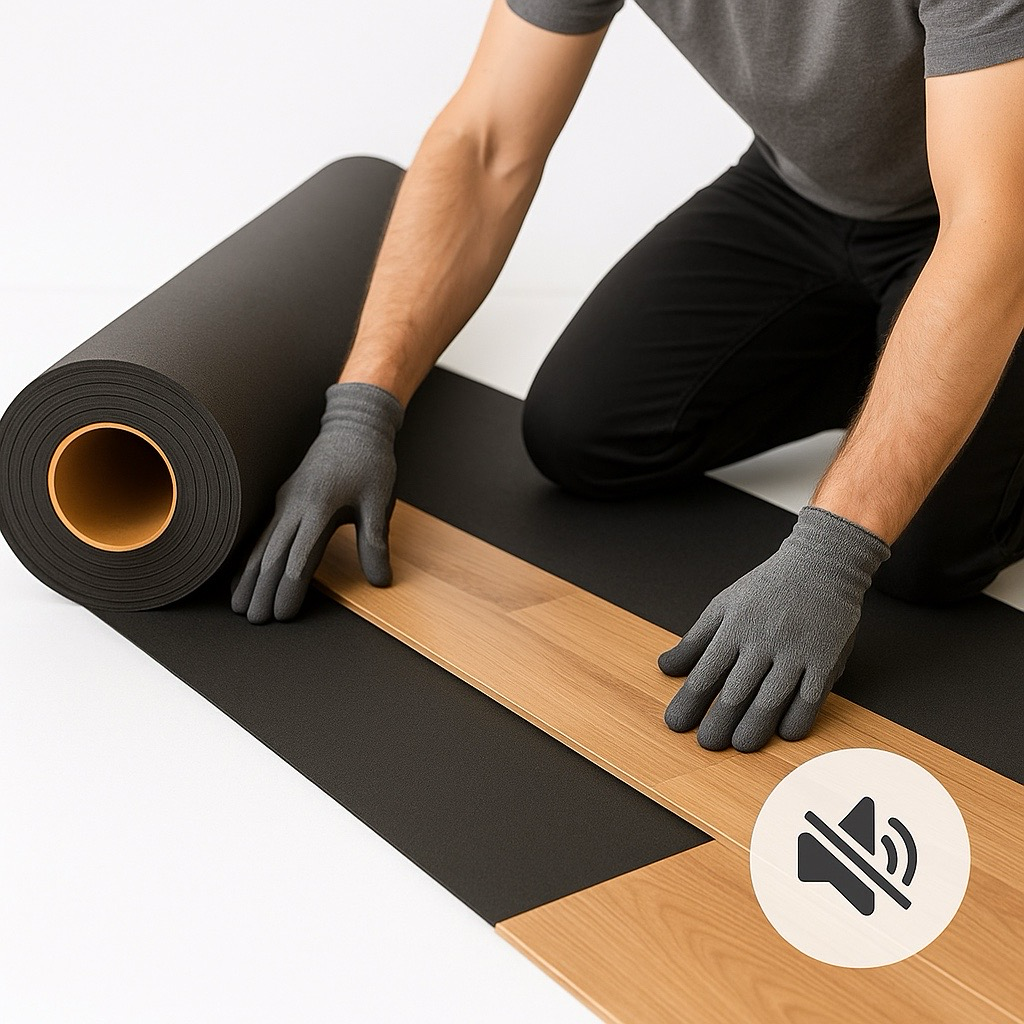Floating Floor Installation Guide: 3 mm Rubber Acoustic Underlayment
Introduction
Floating floors are popular in modern homes because they provide a comfortable walking surface without being permanently fixed to the subfloor. However, they can transmit impact noise and footfall into the rooms below. A high‑quality acoustic underlay helps decouple your floor from the structure and dramatically reduces noise. The 3 mm recycled rubber acoustic underlayment available from Sound Deadening UK is engineered specifically for floating floors and can deliver up to 54 dB impact noise reduction. Made from about 94 % recycled rubber, it has a high density (~950 kg/m³) that adds mass and improves airborne sound insulation. Despite its performance, the mat is thin (3 mm) and moisture‑resistant, so it can be used under laminate, engineered wood, LVT, vinyl plank and tiles without raising the floor too much.
Step‑by‑step installation
• Prepare the subfloor – Make sure the subfloor is level, dry, clean and free from debris or protruding objects. Uneven areas should be levelled and repaired before installing the underlay.
• Measure and cut – Measure the room and cut the underlayment roll to size using a utility knife. For the best acoustic performance, order a continuous roll long enough for your room to minimise seams.
• Lay the underlay – Lay the rubber mat with the rubber surface facing down and the fabric surface facing up. Butt the edges together without overlapping. Avoid stretching or wrinkling the mat.
• Seal joints – Tape or glue the seams to keep the underlay in place and create a continuous barrier. If gluing, use an approved adhesive suitable for rubber. For extra moisture protection, you can also tape over the seams with vapour‑barrier tape.
• Install the flooring – Once the underlay is laid and seams are sealed, install your floating floor directly on top according to the flooring manufacturer’s instructions. The underlay’s high density and resilience will isolate impact noise and improve airborne sound insulation.
Benefits of the 3 mm recycled rubber underlay
• High acoustic performance: reduces impact sound by up to 54 dB and airborne sound by 50‑54 dB, outperforming typical thin foam mats.
• High density and mass: approximately 950 kg/m³, providing superior sound isolation compared with lighter materials.
• Low profile: at just 3 mm thick, it doesn’t significantly raise your floor height and fits comfortably under most laminate, vinyl or engineered wood floors.
• Durable and moisture‑resistant: resistant to mould, bacteria and moisture; suitable for wet areas when used with a moisture barrier.
• Eco‑friendly: made from around 94 % recycled rubber and can contribute to LEED credits.
Conclusion
Installing a quality acoustic underlay beneath your floating floor is one of the most effective ways to reduce noise transmission and improve comfort. By following the steps above, you can ensure a seamless installation and maximise the performance of the 3 mm recycled rubber acoustic underlayment. For more details about this product or to order a roll, visit our product page at Sound Deadening UK or contact us for expert advice.



